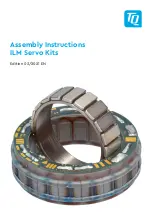
2-32
Malfunctions with Indications
Final Fault Recovery
In general the recovery procedures given for each fault will indicate the
actions necessary to correct the fault condition. In some cases more
extensive troubleshooting techniques are required to identify the cause of
the malfunction. Every effort should be made to determine the cause of the
malfunction before replacing components or circuit boards. The
malfunction, if left uncorrected, could damage the replacement component.
If the cause of the malfunction cannot be determined execute a SYSTEM
RESET to allow the drive to execute its power-on diagnostic routines. These
tests may be able to identify the problem present so it can be corrected. If
this attempt to clear or identify the problem is unsuccessful, cycle power on
the entire drive system. If this still does not give some insight to the problem
then review the Malfunctions Not Indicated by a Fault section for additional
descriptions of possible fault conditions.
Try to identify any external devices that may effect the operation of the
drive. This may include PLC controllers, external relay logic, motion
detectors, line monitors, other drives, etc. Assure that these devices are
verified as fully operational and correctly applied prior to board
replacement.
If everything else in the system appears to be functioning properly, board
replacement may be necessary. Follow all ESD protective procedures to
guard against damage from ESD. It is important that when changing the
boards all firmware modules be replaced with the same part number that
was previously installed. It is also very important that all data that was
stored in any EEPROM devices be restored in the new board by
reprogramming or moving EPROM chips to the new board. When a board is
replaced it is suggested that the Start-up Procedure for the drive be repeated
to assure correct setup and operation.
CP-119
Fwd SCRs Did
Not Conduct
(Soft)
This fault is a result of a malfunction detected
during the SCR test. It indicates that all SCRs of the
forward armature bridge did not conduct current. A
mismatch between drive and motor current
horsepower ratings can also cause this malfunction.
Refer to the Magnetics/Power Structure section for further
details on correcting armature bridge malfunctions. Check
for possible drive/motor mismatch. Check the nameplate of
both the motor and drive.
CP-120
Rev SCRs Did
Not Conduct
(Soft)
This fault is a result of a malfunction detected
during the SCR test. It indicates that all SCRs of the
reverse armature bridge did not conduct current. A
mismatch between drive and motor current
horsepower ratings can also cause this malfunction.
Refer to the Magnetics/Power Structure section for further
details on correcting armature bridge malfunctions. Check
for possible drive/motor mismatch. Check the nameplate of
both the motor and drive.
CP-121
Open Armature
Circuit (Soft)
This fault is a result of a malfunction detected
during the SCR test. It indicates that conduction of
current in either bridge could not be detected. It is
most likely due to the motor and associated wiring
being an open circuit.
Refer to the Magnetics/Power Structure section for further
details on correcting armature bridge malfunctions. Check
that armature leads are not connected to “DB” Pole if a DB
Contactor is used. This may also occur if Drive is too large
for the motor.
Current Processor Faults
No.
Name
Description
Recovery
Aotewell Ltd industry-mall.net
www.aotewell.com
sales@aotewell.com
www.aotewell.com
















































